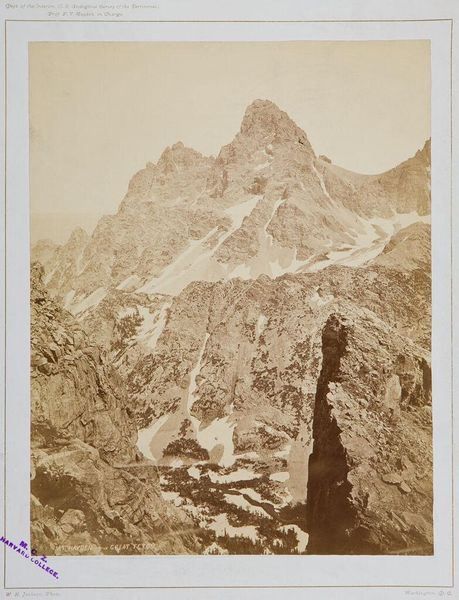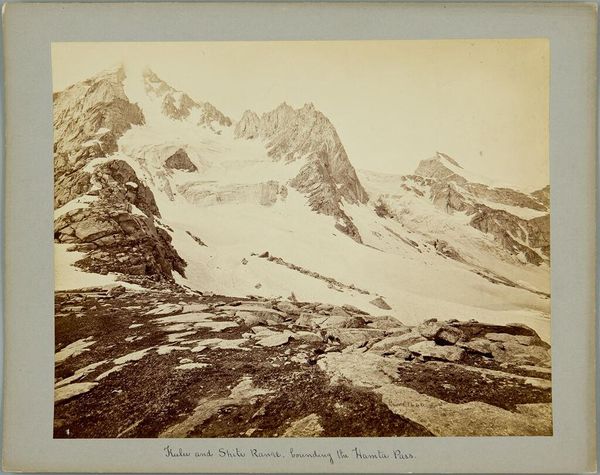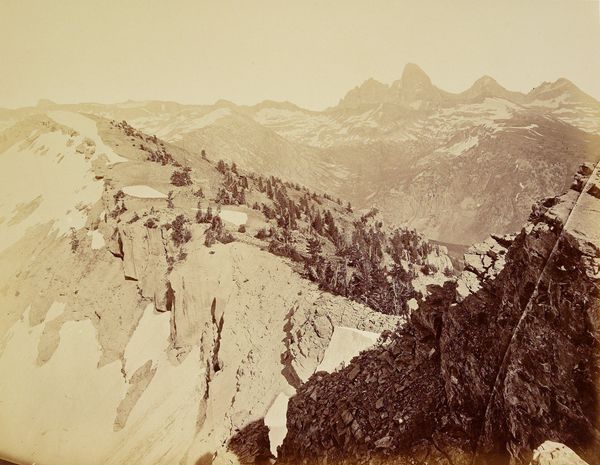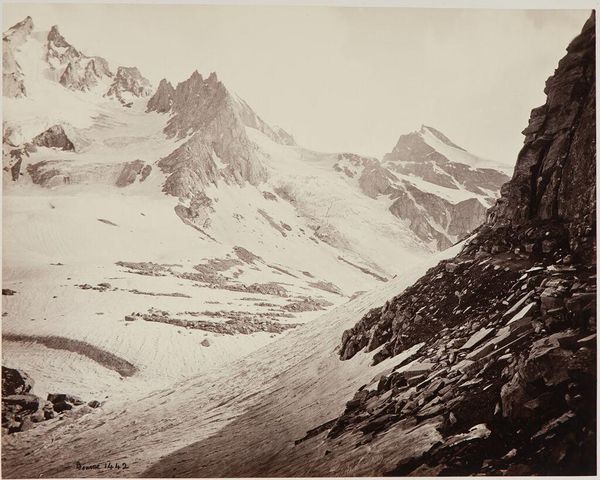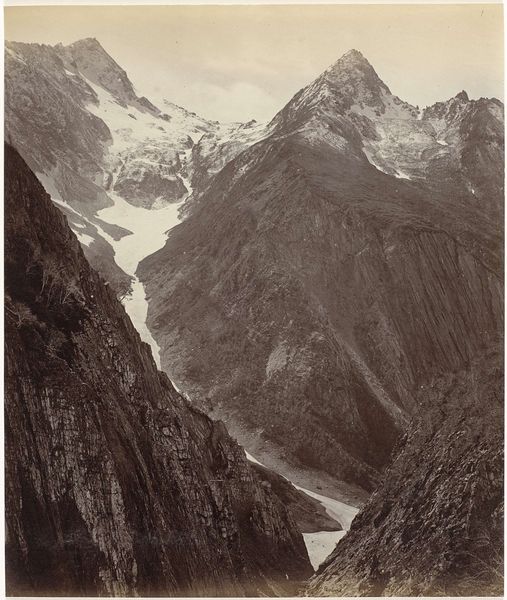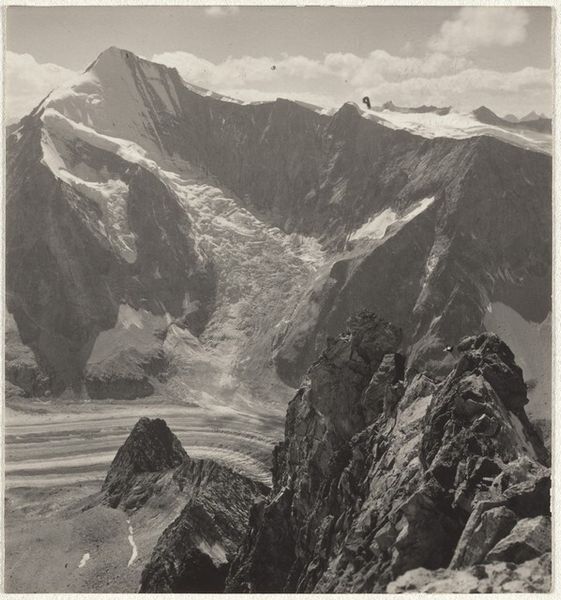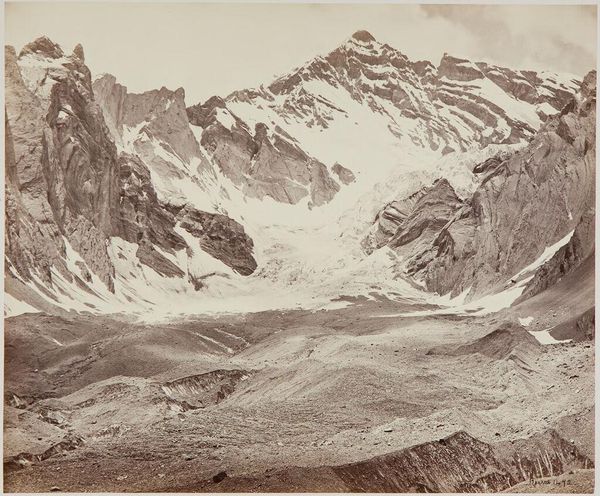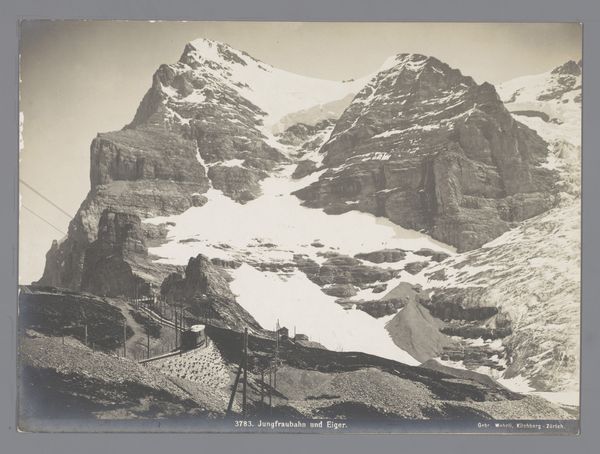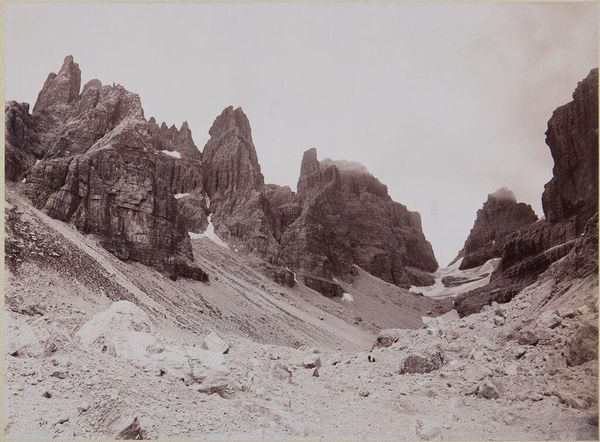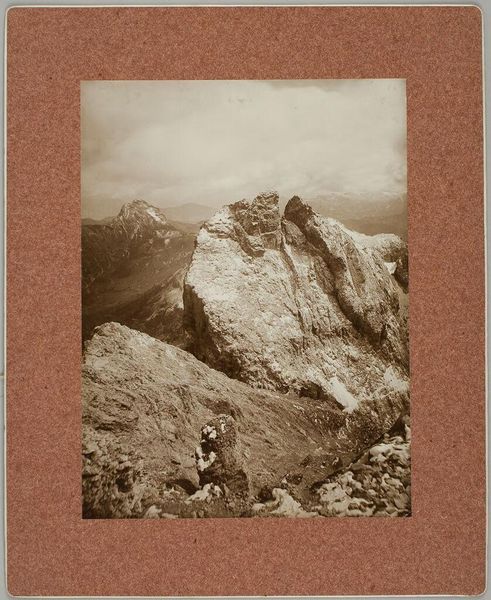
albumen-print, photography, albumen-print
#
albumen-print
#
natural shape and form
#
landscape
#
photography
#
landscape photography
#
geometric
#
hudson-river-school
#
united-states
#
skyscape
#
albumen-print
Dimensions: 12 13/16 x 9 15/16 in. (32.54 x 25.24 cm) (image)19 3/4 x 15 1/2 in. (50.17 x 39.37 cm) (mount)
Copyright: Public Domain
Curator: This is William Henry Jackson's photograph, "Mt. Hayden or the Great Téton," taken around 1873. It's an albumen print, a process that gives the image a warm, sepia tone. Editor: The scale is what immediately strikes me. That central peak dominates, but there's this incredible texture to the rock formations, layers upon layers shaped, surely, over millennia. I find the stark geometric elements beautiful. Curator: Precisely. Jackson's sharp focus and the albumen print’s tonal range really highlight the geometry. The triangular form of the Teton is emphasized, which allows us to think about its Platonic ideal—a natural pyramid reaching for the heavens. Consider this against the rise of geological survey and classification that happened in this era. Editor: Absolutely, it makes me consider the labour involved in creating this image. The arduous journey Jackson must have undertaken to reach this vantage point, the weight of the equipment he carried, the whole process of wet plate photography. These images fueled Western expansion and are crucial when discussing American frontier ideology. The sheer difficulty translates directly to perceived value, doesn't it? Curator: Interesting. Value, undoubtedly. I view the strategic placement of snow and shadow. It breaks up the starkness. He's controlling how we read depth, directing the gaze upward toward the Teton itself. This speaks to a certain ideal about nature's compositional design. Editor: While I acknowledge that, seeing Jackson's efforts, and this material object presented to us, forces a recognition of production—that this isn't some pristine, untouched wilderness. The frontier was mediated, sold as much by images as by railroad expansion. These things were inherently linked. Curator: A good point to consider: Jackson's technical choices highlight and emphasize the inherent sublimity he sees. It is undeniable! He seeks to communicate that, I think. Editor: Agreed. What do you see in it? The grand myth of the untouched American West sold to the masses. Curator: To see it as Jackson saw it. It reminds me there is such potential in art.
Comments
No comments
Be the first to comment and join the conversation on the ultimate creative platform.
